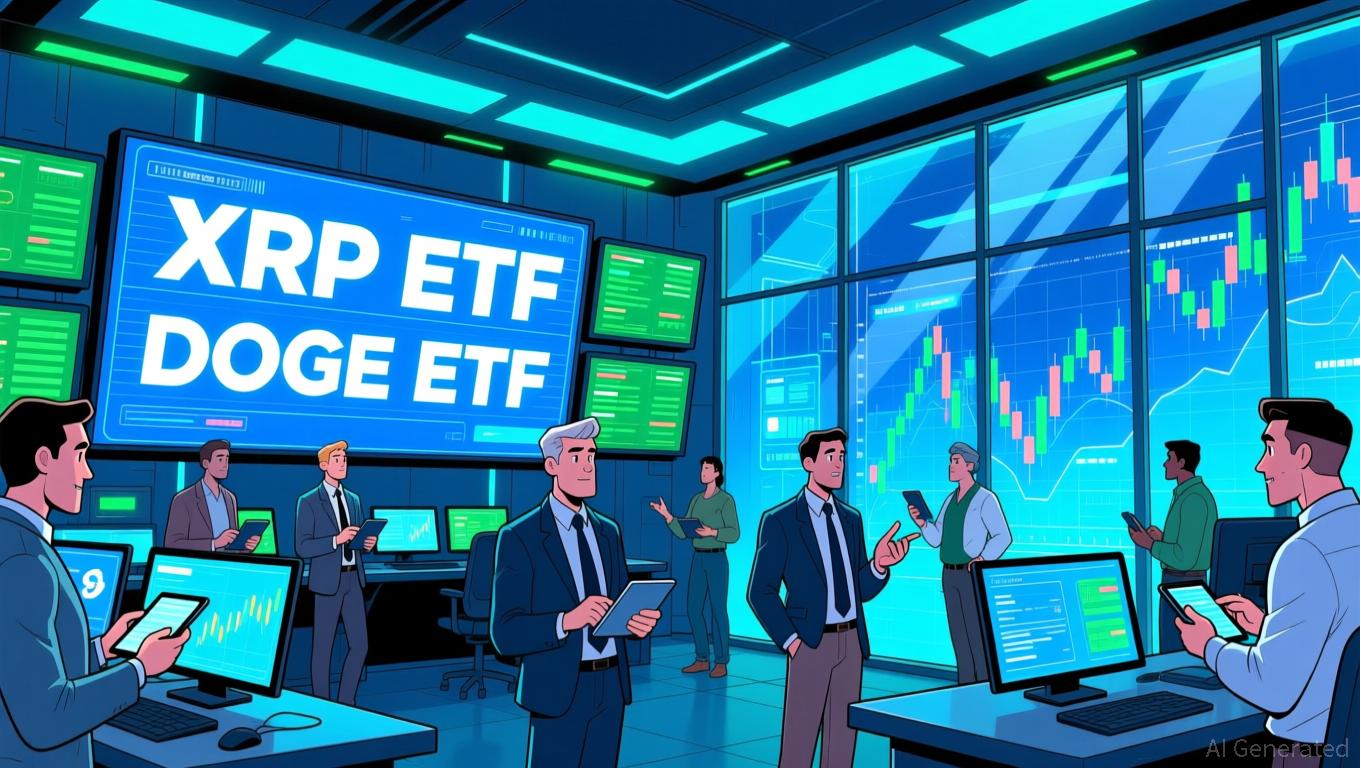Astar 2.0 and the Emerging Era of Scalable Blockchain Solutions: Evaluating the Prospects for Institutional Integration
- Astar 2.0 introduces hybrid blockchain architecture and 300,000 TPS scalability to address institutional adoption barriers. - Strategic partnerships with Sony (Soneium) and Toyota demonstrate real-world applications in entertainment and supply chain digitization. - Institutional confidence grows through $3.16M ASTR investment, 20% QoQ wallet growth, and $2.38M TVL amid market downturn. - Staking 2.0 governance and Chainlink/ChainZero integrations enhance security and cross-chain interoperability for ente
Technical Breakthroughs: Building a Scalable Base for Enterprises
The architecture of Astar 2.0 is crafted to overcome the shortcomings of previous blockchain systems. By merging
Scalability is at the heart of Astar 2.0’s framework. The network is capable of handling up to 150,000 transactions per second (TPS), a number that
Institutional Collaborations: Practical Use Cases and Endorsement
The adoption of Astar 2.0 by institutions is highlighted by its collaborations with international giants such as Sony and Toyota. For example, Sony has
Toyota’s alliance with Astar 2.0 is centered on boosting supply chain visibility using blockchain. By leveraging Astar’s cross-chain features, Toyota seeks to digitize and monitor auto parts in real time, cutting down on inefficiencies and fraud. These applications demonstrate Astar’s ability to tackle sector-specific problems, which is a key consideration for institutions assessing long-term value.
Additionally, Astar’s integration with
Compliance and Security: Fostering Institutional Trust
Trust is fundamental for institutional involvement—a quality often lacking in the crypto world. Astar 2.0 tackles this with Staking 2.0, a governance approach that motivates openness and community-led decisions, aligning the interests of all stakeholders. This system helps reduce risks tied to centralized authority, which has traditionally discouraged institutional entry.
Security is also a top concern. Astar has
Performance Indicators and Institutional Assurance
Astar’s appeal to institutions is further demonstrated by concrete data. In the third quarter of 2025, the platform reached a Total Value Locked (TVL) of $2.38 million,
Market analysts anticipate ASTR’s value could reach $0.80 to $1.20 by 2030,
Summary: Astar 2.0’s Role in Driving Institutional Blockchain Adoption
With its technical advancements, strategic partnerships, and regulatory focus, Astar 2.0 is poised to play a key role in the next phase of blockchain adoption. By solving issues of scalability, interoperability, and enterprise requirements, the platform is removing obstacles that have previously limited institutional involvement. As major companies like Sony and Toyota incorporate Astar’s technology into their operations, the network’s practical value—and its attractiveness to institutional investors—will continue to rise.
For investors, Astar 2.0 is not only a technological breakthrough but also a strategic chance to benefit from the merging of blockchain with traditional industries.
Disclaimer: The content of this article solely reflects the author's opinion and does not represent the platform in any capacity. This article is not intended to serve as a reference for making investment decisions.
You may also like
XRP News Today: SEC Approves Altcoin ETFs, Boosting Institutional Investment in Cryptocurrency
- SEC approves multiple XRP/DOGE ETFs from 21Shares, Franklin Templeton, and Grayscale, signaling growing institutional acceptance of altcoins. - 21Shares' TOXR ETF gains automatic approval via CME CF XRP-Dollar tracking, with Coinbase and BNY Mellon handling custody/admin functions. - Franklin Templeton's XRP Trust removes restrictive clauses to accelerate listing, offering regulated exposure without custody risks from ledger forks. - Grayscale expands crypto offerings with XRP/DOGE ETFs on NYSE, joining

Germany's Solar Turning Point: Spotlight on Legislation, Infrastructure, and Ideological Differences
- Germany's SolarPlus Forum 2025 emphasized legislative clarity, funding innovation, and cross-sector collaboration to accelerate solar adoption amid evolving energy policies. - Outdated regulations and permitting hurdles were highlighted as barriers, with calls to align Bundestag reforms with market demands like gas surcharge removal by 2026. - Cement industry growth (5.7% CAGR) and green innovations support infrastructure needs, though energy cost volatility and compliance challenges persist. - Internati

Polkadot Latest Updates: ECB Raises Concerns: Cryptocurrency and Stock Market Downturns Resemble Dot-Com Bubble Threats
- ECB warns U.S. equity/crypto corrections threaten stability, urging central banks to retain rate-cut flexibility amid market volatility. - JPMorgan links crypto ETF outflows to retail investor behavior, noting $4B November sales contrast with $96B equity ETF inflows. - U.S. Treasury downplays recession risks, citing 2026 growth optimism despite shutdown impacts and services-driven inflation. - MSCI highlights tech valuation risks akin to dot-com era, while DeFi faces $12B liquidity crisis with 95% capita

Novartis Increases 2030 Growth Projections Despite Analysts' Concerns About Patent Threats
- Novartis raised 2030 sales growth targets to 5-6% annually, driven by high peak sales expectations for oncology drugs Kisqali and Scemblix. - CEO Vas Narasimhan highlighted eight de-risked drugs with $3-10B peak potential, but analysts warned of patent expirations and uncertain pipeline progress beyond 2030. - Shares rose 0.5% post-announcement, while Exact Sciences surged 17% on its $105/share acquisition by Abbott and Samsung Biologics saw a 71% valuation re-rating after spin-off. - J.P. Morgan caution
